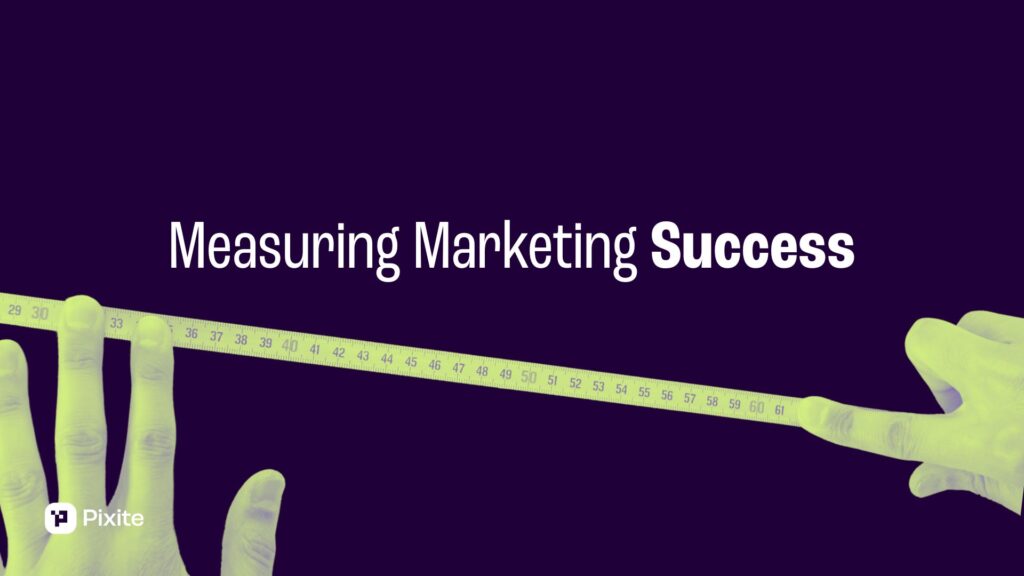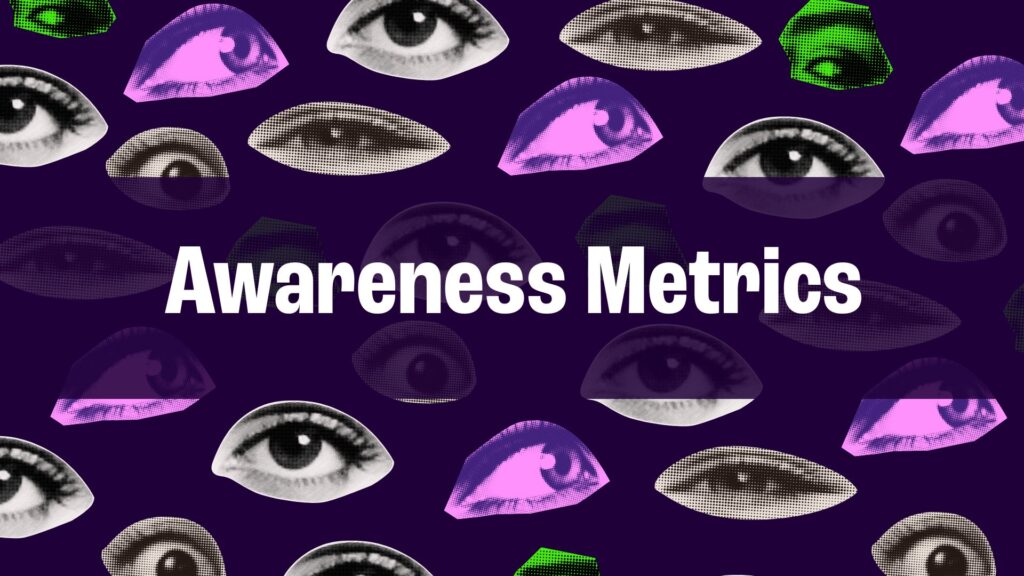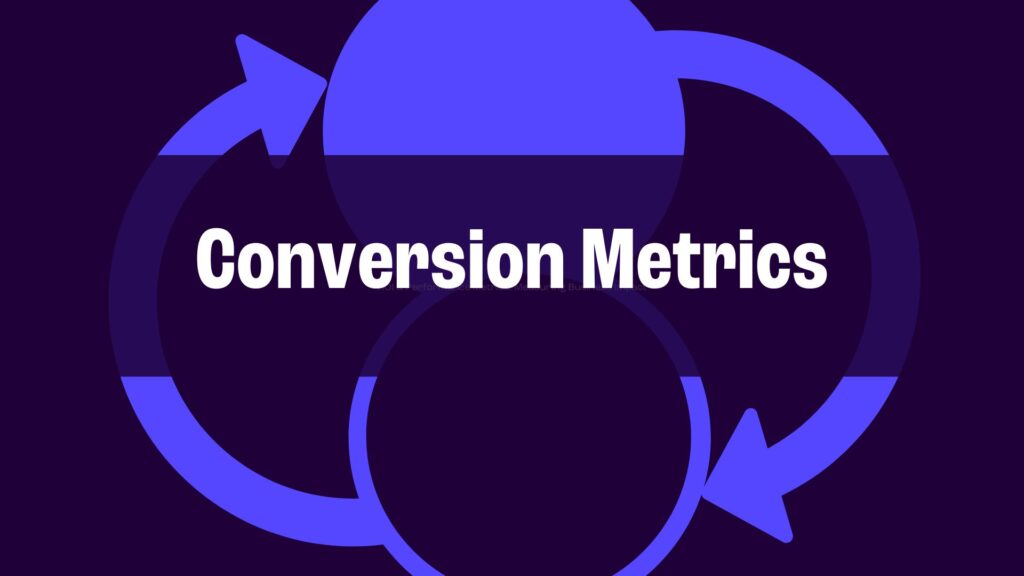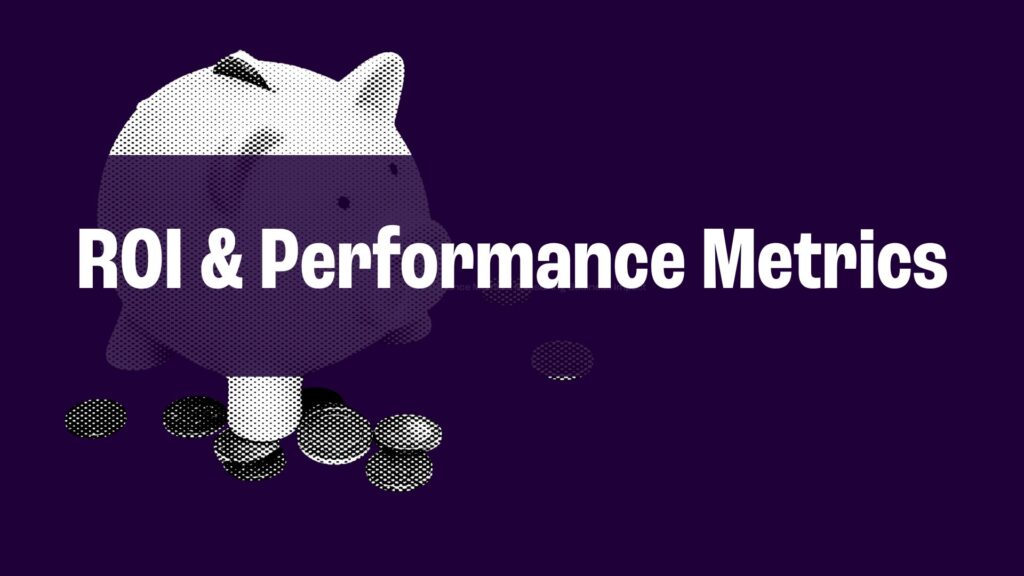Marketing Metrics Every Small Business Owner Should Know

TLDR: Marketing Metrics for Small Business
The article breaks down essential marketing metrics small business owners should track to measure campaign effectiveness and drive growth. Key points include:
- Marketing metrics are categorised into awareness, engagement, conversion, ROI, email, and multi-channel analysis
- Awareness metrics (Impressions, Reach) track how many people see your content
- Engagement metrics (CTR, Interaction Rate) measure how effectively your content captures interest
- Conversion metrics (Conversion Rate, CPA, CAC) show how well you’re turning interest into action
- ROI metrics (ROAS, MER, AOV, CLV) help evaluate the business impact of your marketing spend
- Email marketing metrics (Open Rate, Click Rate) track the effectiveness of your email campaigns
- Blended metrics give a holistic view of performance across all marketing channels
- Understanding the difference between similar metrics (like CPA vs CAC, or ROAS vs MER) helps businesses measure what matters most for their specific goals
- Modern metrics like Interaction Rate are replacing legacy measures like Bounce Rate
- The article emphasises that tracking the right metrics leads to informed decisions that drive sustainable growth rather than just filling spreadsheets with vanity metrics.
Ever feel like marketing reports are written in a different language? Do marketing reports feel like they’re written in ancient hieroglyphics? Most of us have been there. But here’s the truth: understanding your marketing metrics isn’t just for data scientists and marketing gurus—it’s essential for any business owner looking to grow.
We’ve created this no-nonsense guide to help you navigate the metrics that actually move the needle for your business—whether you’re climbing SEO rankings, optimising Google Ads campaigns, or perfecting your Facebook Ads strategy. No more wasting resources on strategies that don’t deliver!
Awareness Metrics: Getting on the Radar

Before anyone can buy from you, they need to know you exist. Awareness metrics help you understand if your brand is being seen by potential customers. These foundational metrics measure the very first touchpoint in your customer’s journey—the moment they discover your business exists.
Impressions
What it is: Impressions count how many times your content is displayed, regardless of clicks.
How it’s calculated: Total number of times your content is shown
Example: If your ad appears in 1,000 people’s social feeds, that’s 1,000 impressions.
Where it applies:
- Social media platforms (all)
- Display advertising
- Content marketing
- Video platforms
- PR campaigns
When to use it: Use impressions to gauge your brand’s visibility and reach. While they don’t guarantee engagement, they’re crucial for awareness. After all, people can’t buy from you if they don’t know you exist.
Reach
What it is: Reach measures the unique number of people who see your content.
How it’s calculated: Count of unique users who have seen your content
Example: If 100 different people see your ad once, your reach is 100. If 50 people see it twice, your reach is still 50.
Where it applies:
- Meta advertising
- Instagram campaigns
- YouTube
- Display networks
- Traditional media (TV, radio, print)
When to use it: Use reach to understand how widely your message is spreading. It’s particularly important for brand awareness campaigns where introducing yourself to new potential customers is the goal.
Engagement Metrics: Capturing Interest

Being seen is only the first step—you need to know if people are actually paying attention. Engagement metrics show whether your content resonates enough to prompt action. They help you measure the quality of interactions and determine if your message is compelling enough to break through the noise.
Click-Through Rate (CTR)
What it is: CTR is your guiding light in the digital ad space. It’s the percentage of people who click on your ad after seeing it.
How it’s calculated: (Number of clicks ÷ Number of impressions) × 100
Example: If your ad is seen 100 times and gets 5 clicks, your CTR is 5%.
Where it applies:
- Google Search ads
- Display advertising
- Email marketing
- Social media advertising
- Content marketing links
When to use it: Use CTR to understand the effectiveness of your ad content. Are people intrigued enough to click? If not, you might want to revise your ad creative. Remember, clicks lead to conversions.
Interaction Rate
What it is: Interaction rate measures meaningful engagements with your content beyond just clicks—including scrolls, form interactions, video plays, and other actions that show genuine interest.
How it’s calculated: (Number of interactions ÷ Number of sessions) × 100
Example: If your site has 500 sessions and 300 of them include meaningful interactions, your interaction rate is 60%.
Where it applies:
- Google Analytics 4
- Website performance analysis
- Content engagement assessment
- User experience evaluation
- Mobile app analytics
When to use it: Use interaction rate to understand how engaging your content truly is. Unlike bounce rate—which counts sessions with no meaningful interaction—interaction rate captures actions like scrolling, playing a video, or filling a form, even if users don’t visit a second page.
Bounce Rate (Being Replaced by Interaction Rate)
What it is: Bounce rate measures the percentage of visitors who leave your site after viewing just one page without any interaction.
How it’s calculated: (Single-page sessions ÷ Total sessions) × 100
Example: If 100 people visit your site and 60 leave without clicking to another page, your bounce rate is 60%.
Where it applies:
- Universal Analytics (being phased out)
- Legacy reporting systems
- Simple landing page assessment
When to use it: While still available in some analytics platforms, bounce rate is being replaced by more meaningful engagement metrics like interaction rate. Consider focusing on interaction rate instead for a more accurate picture of user engagement.
Conversion Metrics: Turning Interest into Action

This is where the rubber meets the road—converting curious visitors into paying customers. Conversion metrics measure how effectively your marketing turns interest into tangible business results. These numbers directly impact your bottom line and show whether your marketing efforts are actually generating returns.
Conversion Rate
What it is: Conversion rate measures the percentage of visitors who take a desired action on your website or landing page.
How it’s calculated: (Number of conversions ÷ Total visitors) × 100
Example: If 1,000 people visit your site and 50 make a purchase, your conversion rate is 5%.
Where it applies:
- Website analytics
- Landing pages
- E-commerce checkout processes
- Lead generation forms
- Email marketing
When to use it: Use conversion rate to assess how effectively your website turns visitors into customers. Low conversion rate? Your website might need some UX love, or your offer might not be hitting the mark.
Cost Per Acquisition (CPA)
What it is: CPA tells you how much it costs to acquire one customer.
How it’s calculated: Total campaign cost ÷ Number of acquisitions
Example: If you spend $100 on ads and get 10 customers, your CPA is $10.
Where it applies:
- Google Ads campaigns
- Meta (Facebook/Instagram) advertising
- Email marketing campaigns
- Display advertising
- YouTube ads
When to use it: Use CPA when you need to understand the financial efficiency of your campaign. Are you spending too much to get each customer? It might be time to tweak your strategies.
Note: CPA definitions can vary—some businesses track cost per lead, others cost per customer. Choose the definition that best aligns with your business goals and be consistent across your reporting.
Customer Acquisition Cost (CAC)
What it is: While CPA typically measures the cost of a specific conversion action, CAC looks at ALL costs involved in acquiring customers—including marketing, sales, salaries, software, and that fancy coffee machine keeping your team fuelled.
How it’s calculated: Total acquisition costs ÷ Number of new customers acquired
Example: If you spend $10,000 monthly on all customer acquisition activities and gain 100 new customers, your CAC is $100 per customer.
Where it applies:
- Business financial planning
- Investor reporting
- Growth strategy development
- SaaS and subscription businesses
- Any business model concerned with customer acquisition
When to use it: Use CAC to get the complete picture of what you’re investing to win new business. Is your growth sustainable? Are customers worth more than they cost to acquire? These answers could be the difference between scaling up or shutting down.
ROI & Performance Metrics: Measuring Business Impact

At the end of the day, marketing needs to generate more money than it costs. These metrics help you determine if your marketing investment is paying off. ROI metrics are the ultimate scorecards for your marketing efforts—showing whether you’re getting genuine business value from your spending.
Return on Ad Spend (ROAS)
What it is: ROAS is the big-picture metric in advertising. It tells you how much revenue you’re generating for every dollar spent on advertising.
How it’s calculated: Revenue from advertising ÷ Cost of advertising
Example: If you spend $100 on ads and make $500 in sales, your ROAS is 5:1.
Where it applies:
- E-commerce platforms (Shopify, WooCommerce)
- Google Ads
- Meta advertising
- Amazon advertising
- Any paid media channel
When to use it: Use ROAS to measure the effectiveness of your advertising efforts. Are you getting a good bang for your buck? It’s a fantastic way to measure the financial success of your campaigns.
Marketing Efficiency Ratio (MER)
What it is: Think of MER as the overachiever of marketing metrics—it measures ALL revenue generated divided by ALL marketing costs.
How it’s calculated: Total revenue ÷ Total marketing spend
Example: If your total revenue is $50,000 and your total marketing spend is $10,000, your MER is 5:1.
Where it applies:
- Overall marketing department performance
- Business performance reporting
- E-commerce businesses
- D2C (Direct-to-Consumer) brands
- Marketing budget planning
When to use it: Use MER when you want to understand your overall marketing effectiveness, beyond just campaigns. It’s particularly valuable when different channels work together to drive sales. A rising MER means your marketing efficiency is improving—and who doesn’t want that?
Average Order Value (AOV)
What it is: AOV shows how much customers spend on average per transaction.
How it’s calculated: Total revenue ÷ Number of orders
Example: If your total revenue is $10,000 from 200 orders, your AOV is $50.
Where it applies:
- E-commerce platforms
- Retail analytics
- Upsell/cross-sell strategy evaluation
- Pricing strategy
- Customer segmentation
When to use it: Use AOV to track the effectiveness of upselling and cross-selling strategies. Increasing AOV can be an easier way to boost revenue than finding new customers.
Customer Lifetime Value (CLV)
What it is: CLV tells you how much revenue you can expect from a single customer throughout your relationship.
How it’s calculated: Average purchase value × Average purchase frequency × Average customer lifespan
Example: If a customer spends an average of $100 monthly for 2 years, their CLV is $2,400.
Where it applies:
- Subscription businesses
- E-commerce customer analysis
- Service-based businesses
- Client retention strategies
- Marketing budget allocation
When to use it: Use CLV alongside CAC to ensure profitability. If your CLV:CAC ratio is at least 3:1, you’ve got a healthy, sustainable business model. If not, you might need to boost retention or decrease acquisition costs.
Email Marketing Metrics: Inbox Impact

Email remains one of the highest-ROI marketing channels available to small businesses. These metrics help you measure how effectively your emails are cutting through inbox clutter. With the average person receiving dozens of emails daily, these numbers show if your messages are resonating or being ignored.
Open Rate
What it is: The percentage of recipients who open your emails.
How it’s calculated: (Number of opens ÷ Number of delivered emails) × 100
Example: If you send 1,000 emails and 200 are opened, your open rate is 20%.
Where it applies:
- Email marketing platforms
- Newsletter campaigns
- Automated email sequences
- Re-engagement campaigns
- Subject line testing
When to use it: Use open rate to measure the effectiveness of your subject lines and sender reputation.
Click Rate
What it is: The percentage of email recipients who click on a link in your email.
How it’s calculated: (Number of clicks ÷ Number of delivered emails) × 100
Example: If 1,000 people receive your email and 50 click a link, your click rate is 5%.
Where it applies:
- Email marketing analytics
- Drip campaigns
- Sales emails
- Promotional offers
- Content distribution
When to use it: Use click rate to gauge the relevance and appeal of your email content and offers.
Multi-Channel Analysis: The Bigger Picture

Most businesses use multiple marketing channels simultaneously, making it crucial to understand performance across your entire marketing ecosystem. Blended metrics give a holistic view across all channels instead of looking at each in isolation—helping you understand the true effectiveness of your overall marketing strategy.
Blended CPA
What it is: Blended CPA combines acquisition costs across all channels to show your true cost per acquisition.
How it’s calculated: Total marketing spend across all channels ÷ Total number of acquisitions
Example: If you spend $5,000 total on marketing and acquire 200 customers, your blended CPA is $25, regardless of which channel drove the conversion.
Where it applies:
- Cross-channel campaign analysis
- Marketing budget reviews
- Performance marketing teams
- Multi-channel digital strategies
When to use it: Use blended CPA to prevent tunnel vision on any single channel. Marketing channels don’t exist in isolation—they work together in your customers’ journey.
Blended ROAS
What it is: Blended ROAS measures return on ad spend across your entire marketing ecosystem.
How it’s calculated: Total revenue from all marketing efforts ÷ Total marketing spend
Example: If you spend $10,000 across all channels and generate $50,000 in revenue, your blended ROAS is 5:1.
Where it applies:
- Full-funnel marketing analysis
- E-commerce performance review
- Marketing department performance
- Executive reporting
When to use it: Use blended ROAS to understand the big picture of your marketing impact, ensuring no channel gets unfair credit for conversions that actually required multiple touchpoints.
Say Goodbye to Boring Metrics, Hello to Growth!
Understanding these metrics isn’t just about filling spreadsheets or impressing your business partners with fancy jargon. It’s about making informed decisions that drive real, sustainable growth for your business.
At Pixite, we’re not just button-pushers; we’re growth architects obsessed with turning visitors into customers and data into decisions. We believe in transparent accountability and expertise-driven growth—which means we help you understand the numbers that actually matter for your business.
Not sure where to start with tracking these metrics? Or perhaps you’re drowning in data but struggling to extract meaningful insights? That’s where we come in. Let’s turn data into decisions—and visitors into customers. Book a chat with us today over coffee. We’ll bring the insights (and the caffeine).
Remember: You can’t improve what you don’t measure. So let’s measure what matters and grow together!
Info
Posted: May 18, 2025
Reading Time:11 minutes
Author
Table Of Contents

